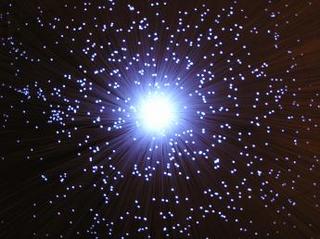
Astronomers at the Chandra X-ray Observatory are agog with findings that may very well trash traditional theories and view the bleak and enigmatic black holes of the Milky Way as originators of new stars. While older theories have held that black holes are the galaxy's destructive forces, these scientists believe that the evidence lies in disks of gas inhabit the vicinity of the black holes to support the new ”star-spawning” theory.
The enigma that surrounds the black holes has spurred numerous science fiction space adventures with the shrunken star remnant's invisible but violent pull even dragging light out of shape into its mysterious vortex. The study that was conducted by the University of Leicester's Sergei Nayakshin and Max Planck Institute's Rashid Sunyaev dwelled into the possibility of black holes playing constructive roles in the galaxies. The spiral Milky Way that supports the earth's solar system on one of its several arms radiating from its core also contains a black hole at its center surrounded by a cluster of stars.
Read more